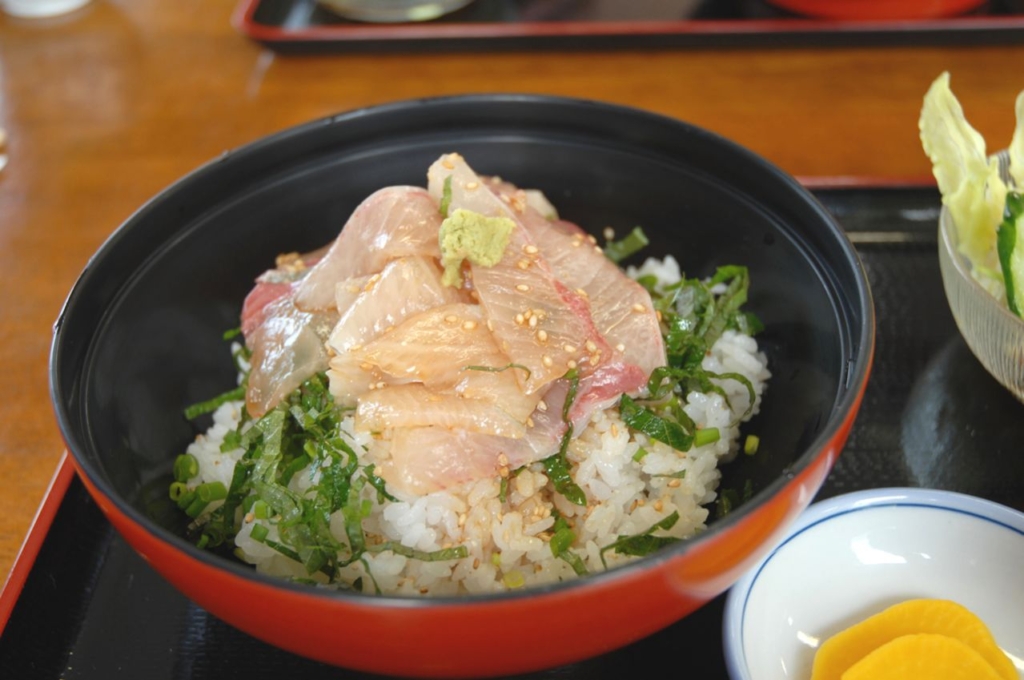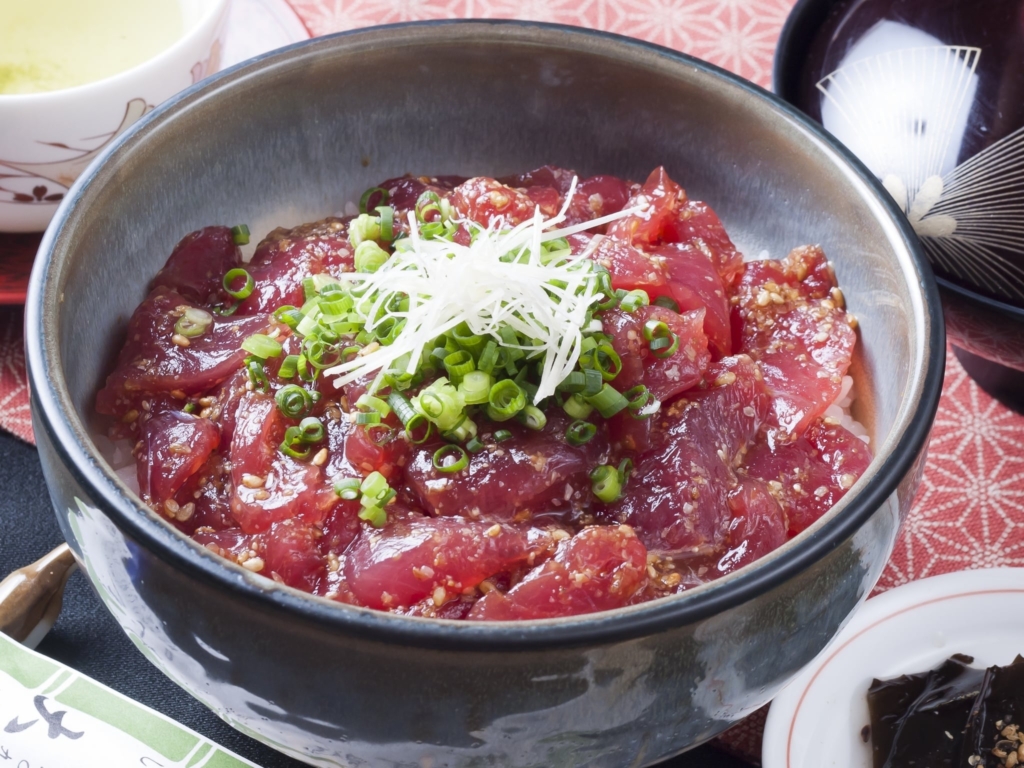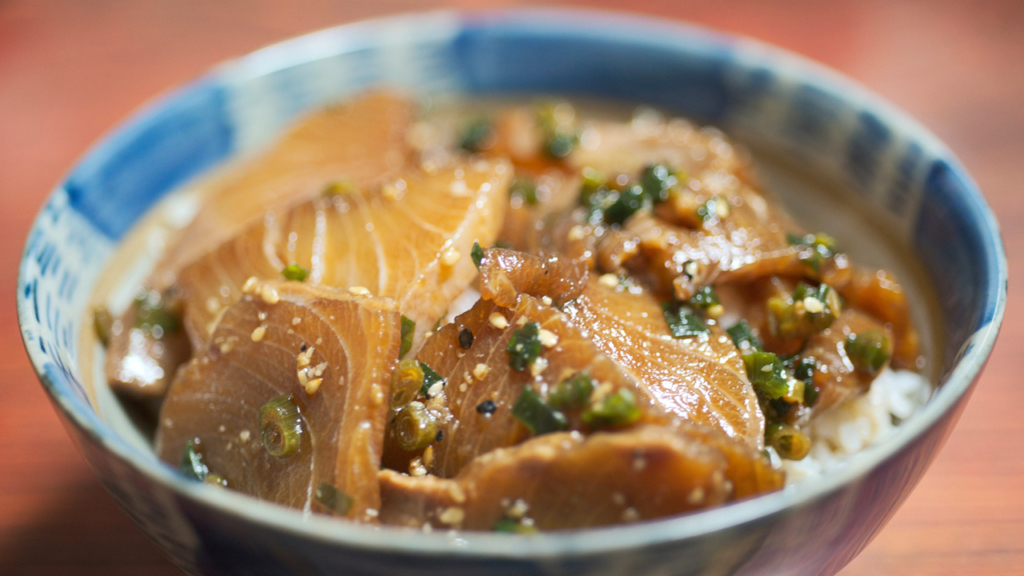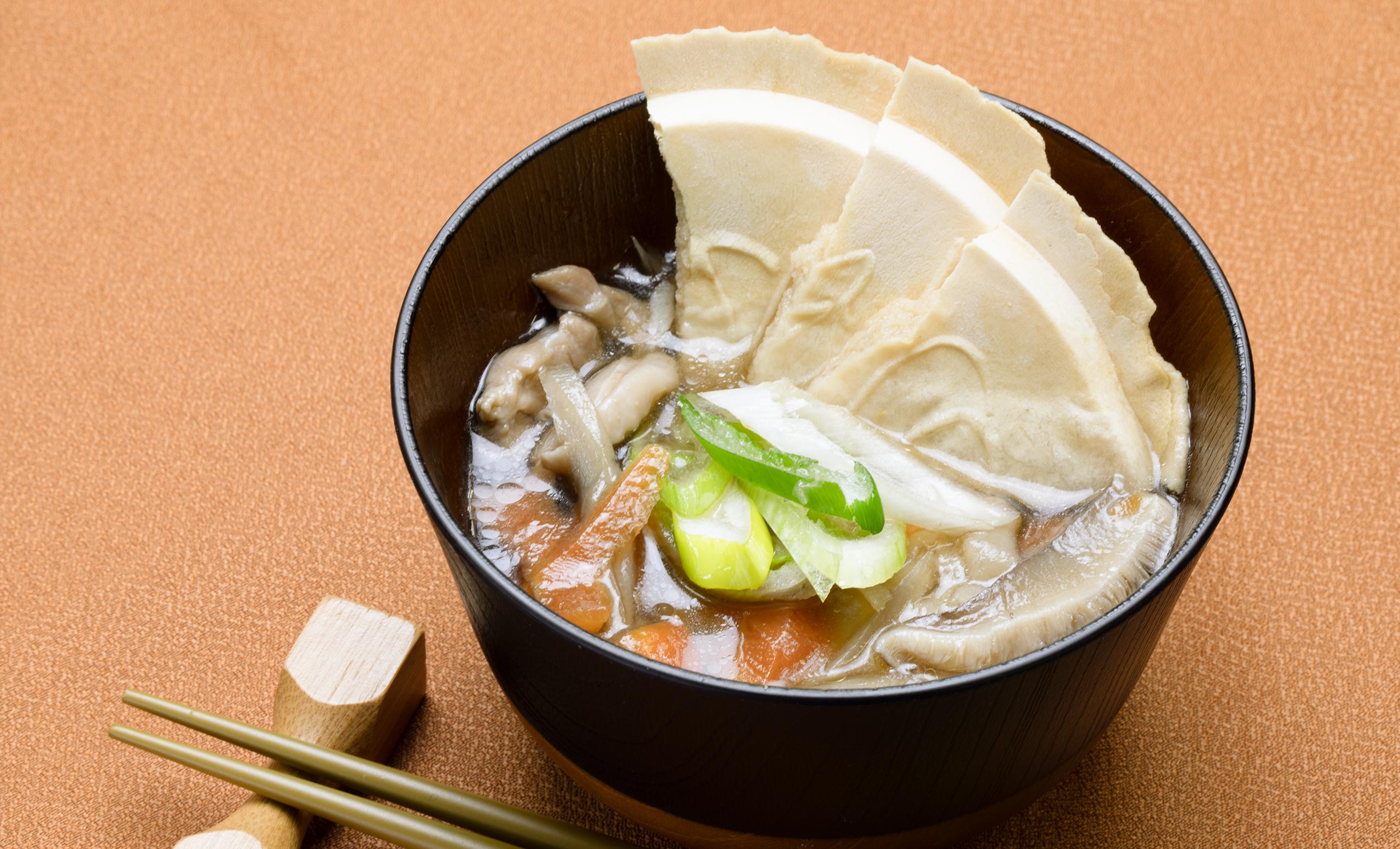
Atsumeshi (あつめし) is a local rice dish from Oita Prefecture (Kyushu Region).
The dish is also called “hyuga-don” (ひゅうが丼) or “Ryukyu-don” (りゅうきゅう丼) depending on which area of Oita you are in.
It consists of sashimi (i.e. raw fish) marinated in a soy sauce mixture and served over a bowl of hot rice.
The name literally translates to “hot rice”. “Atsu” is short for atsui (あつい) which means hot; “meshi” (飯) means meal or rice in Japanese. T
Read on for more interesting info about atsumeshi:
Ingredients

The main ingredients of Atsumeshi are:
- Rice
- Sashimi
- Soy sauce
Yellowtail is the most commonly used fish to make atsumeshi.
Other fish that can be used are mackerel, horse mackerel, and sea bream which are are all local specialties of different areas in Oita Prefecture.
The marinade, or sauce used is typically made with soy sauce combined with other typical seasonings like sugar and sake. Green onions, ginger, and sesame are some other typical seasoning / or garnishing ingredients.
Location

Atsumeshi is found throughout Oita Prefecture of Kyushu (Southern Japan). Oita is well known for yellowtail (as well as other seafood), which is the main ingredient used in atsumeshi.
In fact, Oita produces the third highest amount of yellowtail in all of Japan.
Depending on which part of Oita Prefecture you are in, the dish may be called atsumeshi, hyugadon (ひゅうが丼), or ryukyumeshi (りゅうきゅう丼).
For example, in Saiki City, it will be called atsumeshi. In Tsukumi City, it is called hyugadon. In Oita City, it will probably be called Ryukyu-don.
Each area will have their own slight variation of the dish.
History / Origin of Atsumeshi

Atsumeshi / Hyugadon / Ryukyumeshi was invented by the local fishermen of Oita during the Meiji Era.
It was created as a quick, nutritious, and easy-to-make meal to have while working on a busy boat. It could also be made without the need to cook, which was convenient when there were strong winds at sea.
Sashimi made from freshly caught fish actually has very little umami, as it has not had time to mature enough and develop more flavor. The texture is also rubber-like, so soaking it in soy sauce gives the sashimi much needed flavor.
Marinating also helps preserve the fish, which was helpful for when there was plenty of leftover sashimi to use.
Atsumeshi Recipe
Coming soon!
Fun Facts
- ”Yellowtail Atsumeshi” (ブリのあつめし)was selected as one of the top 100 local dishes of rural areas in Japan by MAFF (Ministry of Agriculture, Forestry, and Fisheries)
Summary
Have you ever tried atsumeshi before? What did you think of it?
Leave your thoughts and comments below!
Subscribe for free today! Receive cool recipes, my latest Japanese knife picks and learn about Japanese culture. Delivered every other week to your inbox.

